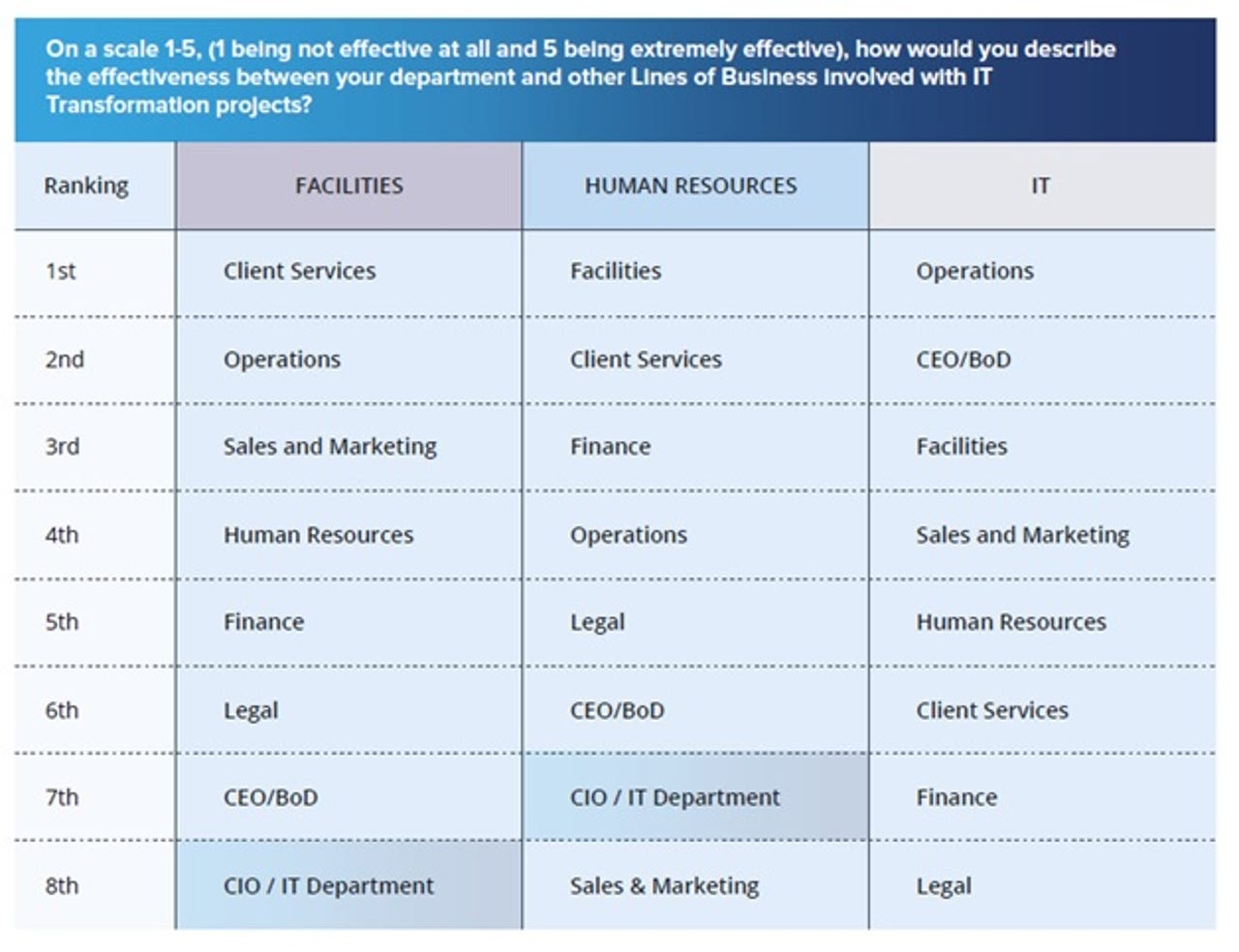Evolving the role of IT in transformation projects
Results from our recent Digital Disruption and the Workplace survey articulate the clear message that other lines of business, key to the success of IT transformation projects, find IT ineffective to engage with.
The graph below shows those in Facilities -- CIO and the IT department -- rank as the eighth most effective department to work with on IT transformation projects. That is dead last. Human resources had a slightly better perception of their IT teams, but not by much, coming in at seven.

This comes at a time when more and more of the IT budget is being given to other lines of business in order to undertake technology projects directly. Having this perception of IT's inability to effectively collaborate, should be a concern to CIOs and other technology executives. The risk is that lines of business will begin to undertake projects without IT's involvement wherever possible, and down the line will have significant implications for the consistency, cohesion, security, and stability of an organisation's technology infrastructure.
IT teams need to take the challenges that other departments have in working with them seriously, and adjust how they operate within the organisation. There are three key areas where IT can hone its approach to the other lines of business within the organisation in order to become more collaborative:
- The first task for an IT team within the organisation is to re-examine their priorities and consider closely the role of the CIO within the broader business. One of the challenges that many IT organisations face is they approach technology from an IT-centric perspective. But this isn't necessarily of interest to Facilities, HR, or other lines of business. Rather than approach technology as a pure technology sell to the entire organisation, the IT team should be looking at individual departments, and the specific technology needs of those groups.
- The next task is to acknowledge that, yes, the technology budget is staying the same or growing within organisations, but IT is getting less of the budget than ever. This might look like an existential threat to IT on the surface, but CIOs need to look at this trend more constructively; there are opportunities to share budget for IT projects with the various lines of business, and use that as an opportunity to facilitate collaboration between the departments.
- The third area where IT can become far more helpful to the other departments is in the measurement and metrics derived from IT projects. When IT is measuring the success of a project, too much time is spent not measuring anything, or measuring the nitty gritty. Other lines of business aren't interested. What they want to understand is whether a project achieved their desired outcomes, and what to tweak, change, or refresh. For example, how well adopted digital transformation technologies are by their staff is of fundamental significance to them. Less so is the technology performance and availability.
By working on these three priorities above, the CIO and IT organisation will become more collaborative. Where previously it was seen as an obstacle by other lines of business in achieving their own goals. Equally critical, will be the IT team itself gaining a better mindset for understanding that technology is a means to an end for the other departments. It will in turn become more creative in developing solutions for the other departments in a productive manner.
From there, the IT team will see itself moving up the ranks in the estimation of HR, Facilities, and other lines of business.
For more Collaboration go to Telstra Exchange.